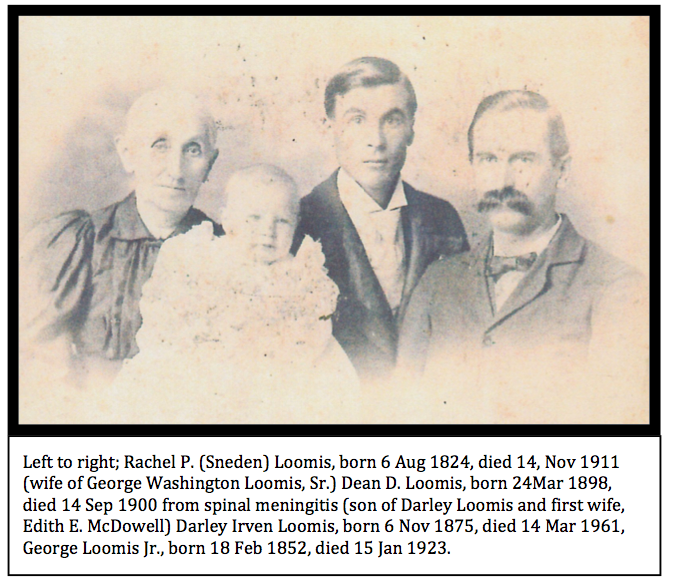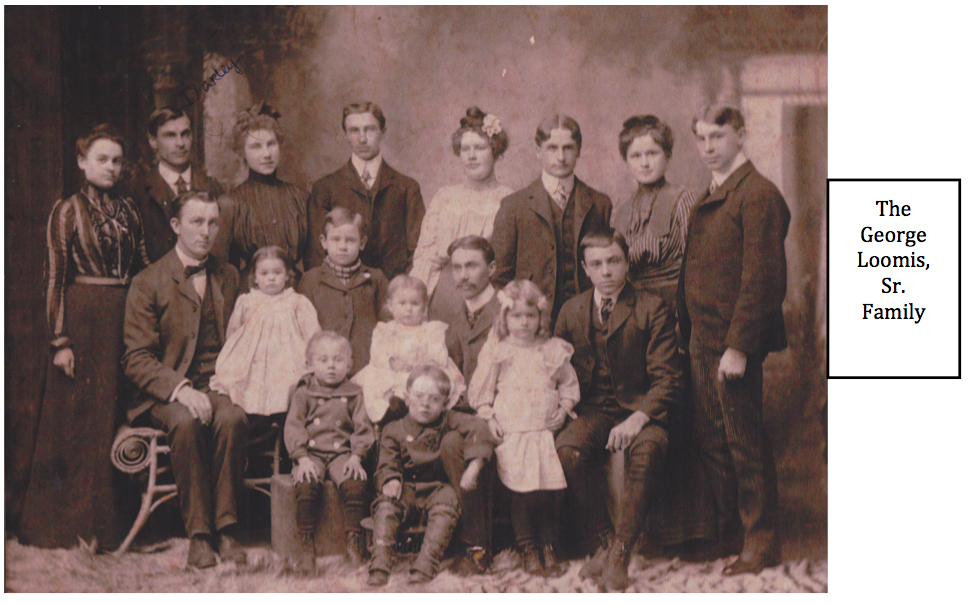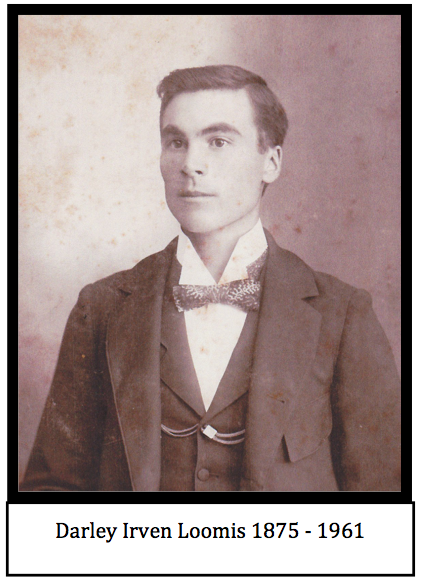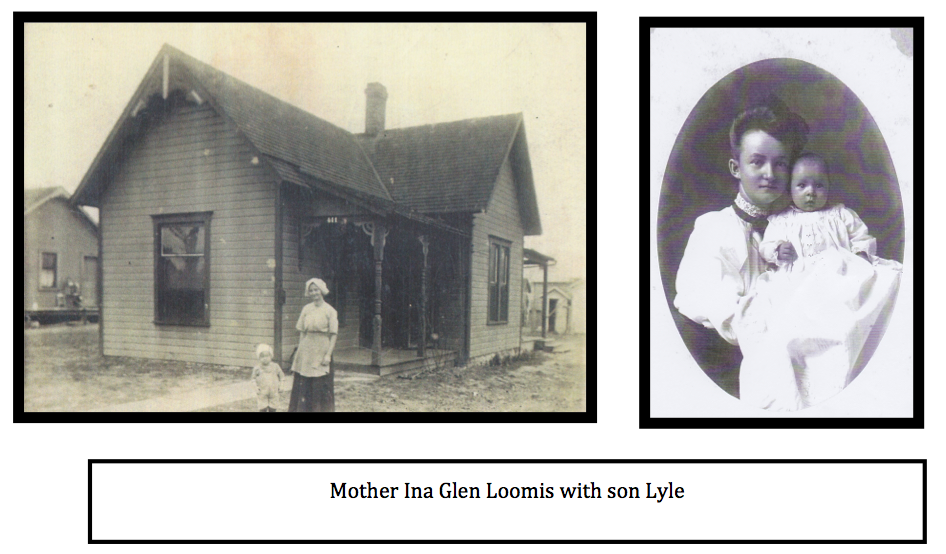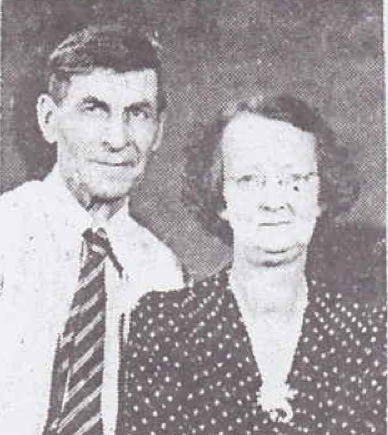The Great Black Swamp
No story concerning an historic farm in Wood County should begin without sharing with the reader some background of the condition of the land before the white settlers came to tame it. The story begins two million years ago long before white man found the Americas, long before Native Americans walked North America, in Northwest Ohio, there was a great river that flowed north. This river was called the Erigans river. The land was not flat, but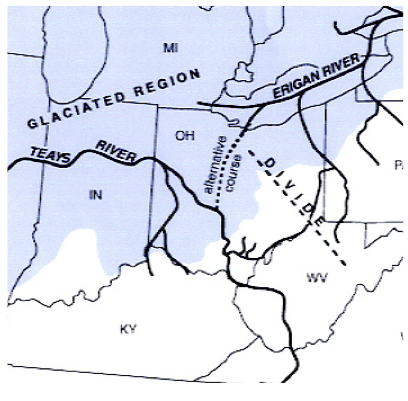
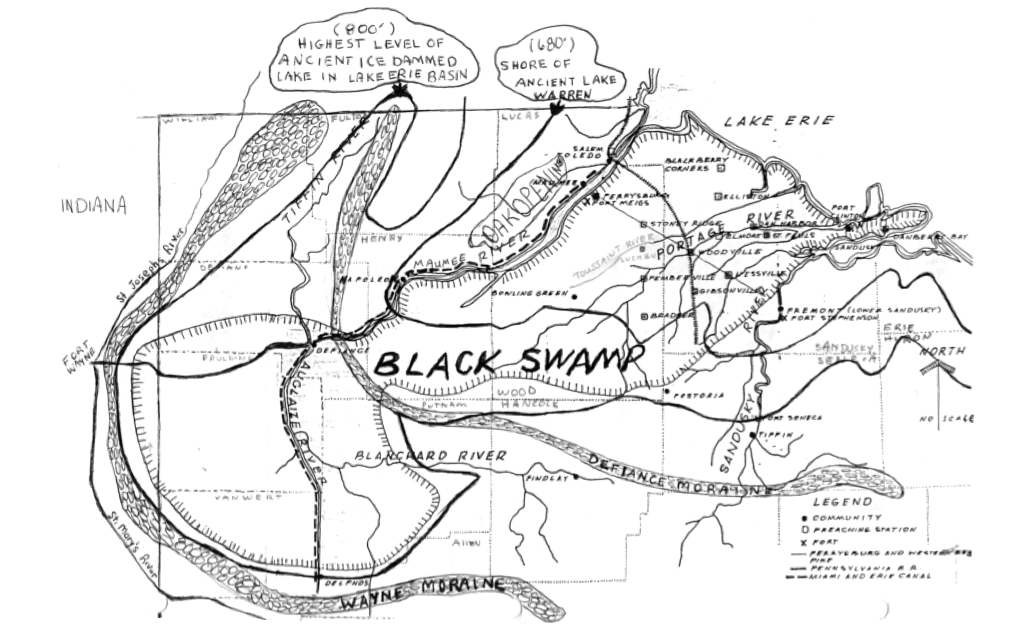 had gentle hills. A million years ago the glaciers came south and covered northwest Ohio including the Erigans River draining to the north. Here in Wood County at one time there was ice sitting on top of the land a mile thick. As the ice melted a
had gentle hills. A million years ago the glaciers came south and covered northwest Ohio including the Erigans River draining to the north. Here in Wood County at one time there was ice sitting on top of the land a mile thick. As the ice melted a
lake, Lake Erigans, was created in this area as the water had no place to go with the Erigans drainage system still covered in ice to the north. As the glaciers retreated north into Canada, the drainage to the north was uncovered and again able to flow. In a very short period of time (geologically speaking) Lake Erigans was emptied. During the drainage of this glacial lake covering northwest Ohio is when the Niagara gorge and Niagara Falls were created. Northwest Ohio was gently rolling before the glacier arrived, it was flatter after the glacial ice scraped the surface. It was caused to be even flatter when the lake covered the land and sediments from the lake filled in any bumps or holes that may have been left. Northwest Ohio is the largest flat area in the eastern half of the U.S. It was in this area that the Great Black Swamp was created. The flat land and the clay deposited from the glacial lake made it impossible for the water to drain and a swamp was created. For twenty thousand years the swamp remained. The Great Black Swamp covered an area almost the size of Connecticut, it was 40 miles wide and 120 miles long.
Descriptions of The Black Swamp
[Howard Good, Black Swamp Farm, pg. 2]
“Over thousands of acres countless trees that towered to unusual heights grew in dense, unbroken stands. The big trees stood like straight, giant poles, branches and leaves joining and intertwining at the tops to form far above the ground a vast canopy that almost completely shut out the sun’s rays. In the woods they found innumerable deer. There were also many bears, wolves, wildcats, foxes and the like, as well as a wide variety of game, songbirds and birds of prey. Snakes, including deadly rattlers, moccasins, and copperheads were likewise in evidence. Fish abounded in the streams. Armadas of bloodthirsty mosquitoes lurked everywhere, and on every hand frogs and turtles were present in great numbers. …great reaches of water lying dark and motionless, over much of the flat terrain. This stagnant accumulation, in combination with the waxy gumbo beneath it, made travel other than by boat or canoe in the streams extremely difficult and unpleasant, not to say hazardous at times. “
[Jim Mollenkopf, The Great Black Swamp II, pg. 59]
“For thousands of years the Great Black Swamp existed, remnants of a once vast glacial lake. As the millennia passed it lay undisturbed, known only to the wildlife that lived in it and the aboriginal peoples who occasionally hunted it. When the 1800’s dawned it was still a pristine wilderness of towering trees, marshy meadows, and wild animals, a domain incompatible with human existence at the time.
But changes were looming, big changes, as new people were streaming to the land. At first they went no further than the edge of the great marsh and peering in and seeing its rich dark soil, inky waters and cathedral stands of trees that turned daylight into dark, named it the Black Swamp. Home also to deep water and mud that could sink a horse to its chest in the spring, ravenous clouds of mosquitoes in the summer, and malarial fevers in the fall, its perimeter was penetrated by few.”
The Great Black Swamp was an oozing mass of water and mud. Water, often up to the belly of a horse, stood on the surface until it evaporated in the hot summer months. When it rained, or thawed in the winter, it was water and muck. Much of the swamp was covered with an almost impenetrable forest of giant oak, sycamore, hickory, walnut, ash, elm, maple and cottonwood trees. The trees were first growth. That means that man had not cut the trees down and they were able to grow to maturity. These trees grew to be 6 feet in diameter and so large it would take six grown men hand to hand to circle around one. The swamp was thousands of acres of a countless number of trees that towered to unusual heights. Hovering above the swamp was a vast canopy of joining branches and leaves that cut out almost all of the sun’s rays. In the woods they found herds of deer. There were also many bears, wolves, wildcats, foxes and the like, as well as a wide variety of game, songbirds and birds of prey. Snakes, including deadly rattlers, moccasins, and copperheads were likewise in evidence. Fish abounded in the streams. Armadas of bloodthirsty mosquitoes lurked everywhere, biting flies, clouds of gnats and on every hand frogs and turtles were present in great numbers. This stagnant accumulation, in combination with the waxy gumbo beneath it, made travel other than by boat or canoe in the streams extremely difficult and unpleasant, not to say hazardous at times. Attempts to build roads failed as they sunk into the muck. The best time for travel was in the bitter cold of winter when the swamp would freeze over. Not even native Indians went into the swamp except to hunt, and unless you could follow a blazed trail, it was easy to become hopelessly lost.
By the 1830’s the majority of desirable ground east of the Mississippi had been taken. Pioneers then began to look to the Black Swamp for possible habitation. At first pioneers settled along riverbanks or on sand ridges but as the 1840’s came around, more and more settlers were braving the swamp in order to own their own piece of land. It took several generations to determine that the land below the swamp waters was rich flat fertile land, some of the best farmland in the world. It also took the medical profession that long to determine that the illness endured by most occupants of the swamp, ague or malaria fever, was not caused by swamp gas but by mosquitoes that transmitted the disease. By 1850, the Ohio legislature passed the first law regarding government support for drainage systems resulting in people throughout northwest Ohio cooperating in wide-area drainage, with ditches deep enough to drain the swamp water into Lake Erie via the Maumee and Portage rivers. Individual farmers dried out their fields by plowing trenches, laying underground wooden troughs and eventually burying clay tiles to form a system of drainage about their acreage. The drainage system in The Great Black Swamp is considered one of the greatest underground drainage systems in the history of the world. By 1900 little evidence of the swamp remained. The towering forests were also gone, the trees had either been used for lumber, burned to fuel tile kilns or just burned.
Draining the Swamp
[Howard Good, Black Swamp Farm, Chapt. 3, “Drainage” pg. 21 – 27]
Clearing the land of trees, though on a limited scale in the earlier years of settlement, aided in disposing of surface water. It allowed the sun to dry the soil and to hasten the melting of winter snows, which before had fed water into the ground during a long period in spring. Drainage work began with the removal of obstructions in natural streams and the digging of open ditches on an extensive local scale. Later, drainage systems became county and inter-county projects carried on under regulations prescribed by state laws.
A notable drainage project was the “Jackson cut-off” in Wood County. Completed in 1879 at a cost of $110,000, this channel nine miles in length and twenty feet deep in places, connects headwaters of the portage River to Beaver Creek, a tributary of the Maumee. It has converted into a garden spot 30,000 acres of land, formerly worthless because the Portage River, meandering northeasterly to Lake Erie, did not provide adequate drainage. Another main line channel, dug some years earlier in one of the wettest portions of the Black Swamp, is more than thirty miles long. Canal-like in proportions, it drains some fifty thousand acres.
Drainage work continued until the region was covered by a network of open ditches having an aggregate length of many hundreds of miles. These horse-drawn dump scrapers for scooping out these ditches involved an enormous amount of very strenuous human labor. In many cases the drainage channels follow the routes of old, shallow natural watercourses, winding for miles through fields and woodlands of several farms. Some run alongside highways, being so routed to avoid cutting up wasting farmland. After the automobile came into general use miles of guardrails had to be erected beside deep roadside ditches. Where the danger to motorists was greatest, sewer pipes were laid in and the ditches were filled up.
These man-made ditches and many of the natural creeks and rivers have been deepened and widened at intervals since the first drainage work was done. In some cases this has involved, in the lower courses, blasting and removing long ledges of bedrock. The work, now done with mechanized equipment, goes on year after year. Wherever one may travel in the region, he is pretty sure to find a power shovel or dredge at work, increasing the water carrying capacity of some ditch, creek, or river.
In the decade 1835 – 1845 several hundred miles of canals were dug and made operative in the state. The Miami and Erie Canal, completed in 1845, extended from Cincinnati on the Ohio River, to Toledo, on Lake Erie, a distance of 250 miles. Its course lay over a part of the boundary line between our county and adjoining Allen County on the east. Together with a branch line to the north of us, extending from Indiana, it aided greatly in the drainage of the area although of course, like others of the system, it was intended to serve primarily as a waterway for trade and travel. In its heyday the Miami and Erie carried a great volume of freight, and hundreds of passengers traveled in its packet boats. The canal and the area it served soon came to enjoy extraordinary prosperity. This prosperity continued only a relatively short time, however, it was slowly eroded, and finally destroyed by the competition of the railroads, the first of which in the state was completed in 1848 –about the time the canal system was getting into its stride.
In the flourishing days of area canals, towns along their courses grew quite rapidly. At several points new towns sprang up suddenly and burgeoned forth phenomenally. Without the canals they probably would never have come into being at all.
Some of the canal workers and a considerable proportion of the people attracted to canal towns were rough, lawless adventurers. Saloons for the accommodation of roisterers and gamblers in many cases predominated among the business establishments of such towns. One canal town that now can boast only about fourteen hundred residence had a population close to five thousand and some forty saloons in boom days. Behind the bar in saloons that catered to canal trade, proprietors in numerous cases maintained a sort of stockade. When carousing boatmen or other patrons got drunk and began to brawl, a muscular bouncer hustled them into the “bullpen” and left them there to fight it out.
Sedimentation and the trampling of livestock cause creeks and open ditches to choke up fairly rapidly. Grasses and weeds help the process along. The creek through our farm, like most others, had to be dredged out at intervals of five or six years, the work being all down with horse drawn scrapers. The gumbo, mixed with a conglomeration of weeds, grasses, sticks and stones, was scooped out and dumped in uneven piles on the banks.
Wherever a fence crossed a stream, it was necessary to maintain a floodgate to prevent livestock from escaping under the fence. Built of boards to fit the contour of the streambed, it was suspended horizontally and hinged so that it could swing downstream when the water rose, then close automatically as the water went down. We always had to take down and later remount our floodgate—sometimes to rebuild it completely—when dredging was done.
Open ditches carried off surface water, but they did not help greatly with water in the soil or with water that stood in distant low spots. To remedy this condition, early farmers laid box-like plank drains in their fields, designed to discharge into open ditches or creeks. They helped a great deal, but though made of good oak, they never lasted long because they were subject to conditions highly favorable to decay. The channels they had provided gradually filled up with soil so that at last little or no water could get through.
In time burned clay tiles, generally handmade, came into use for underground drains. Having round tops and flat bottoms, they were known as “horseshoe tiles”. Few of the drains in which they were used were satisfactory because the tiles were easily broken down and became outlets generally were so shallow that they could not be laid deeply enough. Often the plow, running at a depth of seven or eight inches on our farm, would crash through old horseshoe tiles of drains put in by our predecessors. Though choked with dark loam, we usually found them still carrying a trickle of water. We also found remains of old plank drains. The wood was so badly decayed that only fragments of the original boards remained. The black soil that filled the crumbling ducts, however, was so porous that some water was still getting through it.
Those inadequate old drains stood pathetically as evidence of human courage and fighting spirit in the face of grimly adverse conditions. The original owner was aware that outlets were not deep enough for those drains to be fully effective. But they were the best available at the time, and he was willing to invest time, labor and hard earned money to make the most of resources he had.
After an extensive system of deeper outlet channels had been provided, mills for making good cylindrical clay tiles were set up throughout the area. These plants not greatly different from those now in general operations, had machines for grinding and pugging the moistened clay, then extruding the tough plastic material through a die in the form of a continuous tube. Diameters ranged up to twelve inches. As the tube came from the die, it was cut by a tautly stretched wire into standard twelve-inch lengths. After drying in open air under a roof, the tiles were burned in wood fired kilns until hard. The demand for clay tiles remains high. Many of the cast concrete, are also made and sold. Even though his fields may be underlain by numerous lines of tile drains, the average farmer continues to plan for more.
The underground drainage system of the old Black Swamp is now probably the most extensive in the world, connected into innumerable open ditches and natural streams. Even heavy rains are disposed of quickly, the runoff being hastened by widespread deforestation. At times enormous volumes of water, augmented by melting snows, pour down and cause serious flooding in lower outlet channels. Good soil, totaling millions of tons, is carried away, being finally deposited as navigation-obstructing silt in Maumee Bay.
The soil water table has been gradually falling for years, at a rate approximately commensurate with the progress of deforestation and the rate at which deep drainage has been extended. With the water table too low, growing crops suffer in periods of scant rainfall. Since about 1935, farms and municipal wells here and there have been failing in dry summers. If deeper drilling does not restore water supplies, it becomes necessary for farmers to buy water and for towns to impose use restrictions. At great expense some municipalities have built reservoirs for storing water pumped from dammed streams. Others are drawing water through pipelines from distant sources. In a few instances cities having abundant supplies are selling treated water to neighboring municipalities and populous rural areas, metering it through large mains.
For years, all trenches for tile drains were cut laboriously with spade and shovel. Now, practically all trenching is done by a self-propelled machine that does the work a great deal faster and saves an enormous amount of time and labor. However the trench may be cut, tiles are placed in the bottom so that each fits squarely against the one previously laid. Joints are never cemented or otherwise sealed; they must be open enough to allow water to seep in, yet no joint opening must be so wide that soil will be washed in, to be lost or to accumulate in the drain.
A pair of knee-length rubber boots was a must for the ditcher working with hand tools in sticky mud or in stretches of trench containing water. The soles were thick and tough, an important advantage in spading and in kicking tiles into place. In the course of about a decade, during which I had a hand at putting in an aggregate of several miles of tile drains on our farm, I became pretty well acquainted with those boots. They were not only heavy to drag about but they had a provoking habit of working the wearer’s socks halfway off, so that rolls and wrinkles in them cramped and pinched his feet. They were too warm in warm weather and feet nearly froze in them when it was cold. Walking through a deep trench, the flaring tops funneled a lot of loose earth, which made the feet uncomfortable and soiled the inside of the boots and, thereafter, socks and feet.
Water flowing from a tile drain is nearly always as clear and sparkling as water from a spring. It is pleasantly cool, even in summer—very tempting when one was thirsty. Some drank it freely, but this was risky because of the possibility that it might be contaminated.
The Carter Historic Farm, Wood County Park District
Marcella (Sally) nee Carter Loomis and Lyle Loomis Farm
The Carter Historic Farm was the dream of Sally (nee Carter) and Lyle Loomis. It was their wish that the family farm be preserved for future generations to enjoy. Both Sally and Lyle were from pioneer families of Center and near-by Webster Townships. The Loomis family arrived a bit earlier than the Carters so we begin our peek into history with the Loomis family first.
Levi Loomis was the first white settler on Scotch Ridge, arriving in 1834. Actually, Levi wasn’t all white as Levi’s mother, Elizabeth, was an Indian Maiden from Stockbridge, Mass. Levi and his wife Prudence Parker (Stedman) Loomis had four children and twenty-eight grandchildren, most of whom lived in and around Scotch Ridge. Their children were as follows; George Washington Loomis, Sr. born 12 March 1823, Dudley Loomis born 9 February 1825, Malinda Loomis (married Samuel Muir) born 25 May 1826, Loren Levi Loomis (married Abby J. Phillips) born 26 Jul 1829 and little William born about 1832. Levi died at the young age of 35 leaving Prudence to raise the children by herself. Wonderful accounts of the Loomis family, including Levi, Prudence, their children and the Scotch from Scotch Ridge can be found in Charolotte Dunipace Shaw’s book “ The Scotch of Scotch Ridge, OH” and Ortha Wight’s book “This is a Long Letter.”
MORE ON LEVI AND PRUDENCE
I. Loren Loomis B 2 Oct 1747 BP Simsbury, Hartford Co., CT
+ Indian Maiden named Elizabeth B about 1762 [Stockbridge Indian, Mass.] mar abt. 1783
II. Levi Loomis B: 6 Nov 1801 BP:Stockbridge, Berkshire Co., MA D: 21 Jan 1836 DP: Scotch Ridge, Wood Co. OH
+ Prudence Parker Stedman B: 1804 D: 1875 mar abt. 1822 in Liverpool Twp., Medina Co., OH.
Children of Levi and Prudence
III. George Washington Loomis, Sr. B: 12 Mar 1823 BP: Liverpool Medina OH D: 9 May 1889 DP: Scotch Ridge, OH
III. Dudley Loomis B: 9 Feb 1825 BP Medina Co. OH
III. Malinda Loomis B: 25 May 1826 BP: Medina Co. OH + Samuel Muir [Samuel and Malinda had 11 children]
III. Loren Levi B: 26 Jul 1829
+ Abby J. Phillips
When father Levi died, George was just thirteen years old. From the time George was very young he was known in the community as a financial leader and highly responsible individual. He was one of the first township trustees of Webster Township, treasurer and postmaster from 1857 to 1871. From the time of his father’s death he was responsible for the welfare of his widowed mother and six siblings. One of his first financial endeavors was the purchase of the Ten Mile House along with 74 acres at the age of seventeen. George took for his wife, Rachel Sneden and together they had nine children who lived to adulthood. In 1850 George built the modern and elaborate Loomis family home on top of Scotch Ridge that for many years was the center of social activity in the area The home still stands today in 2015. George financially supported his younger brother Loren in his medical schooling and then again arranged for financial support until he became established in his practice. Eventually George was the proud owner of 640 acres and was able to give each of his own eight children 80 acres. He was also able to purchase the bell for the Webster United Brethren Church.
Grandma Loomis (Rachael Permilia Sneeden) was a child of New Englanders who followed the woods to the Western Reserve in Ohio. After leaving their home in Vermont, her grandparents had settled along the Susquehanna River at Binghamton. There her father and mother were married and there she was born in 1823. Rachael left Binghamton New York with her parents, brothers, grandparents uncles and
aunts for a new home in Ohio in 1833. Rachael entertained her grandchildren with stories of her childhood such as; the great River, the hills where she went berrying, and making a dress for herself when ten years old. After leaving Binghamton by stagecoach, they reached Rome, New York then they boarded a canal boat for Buffalo. After a long rugged trip, they arrived in Buffalo. From there they crossed Lake Erie by boat, landing East of Cleveland.
MORE ON GEORGE W. LOOMIS, Sr. (1823) AND PERMILIA (1824)
III. George Washington Loomis B: 12 Mar 1823 BP: Liverpool Medina OH D: 5 Sep 1889 DP: Scotch Ridge, OH
+ Rachael Permelia Sneeden B: 6 Aug 1824 BP Windsor NY D: 15 Nov 1911 DP: Scotch Ridge, OH
Children of George Sr. and Permelia
IV. Pruda Philinda Loomis B: 19 Jan 1849 – 14 Dec 1875
IV. Alma Lovilla Loomis B: 6 Jun 1850 – 1 Mar 1899
IV. George W. Looomis, Jr. B: 18 Feb 1852 – 1923 [see below]
IV. Benjamin Levi Loomis B: 11 Mar 1854 – 11 Jun 1929
IV. Edmund Lorin Loomis B 6 Jun 1856 – 23 Jun 1939
IV. Laura Eliza Loomis B: 1 Apr 1858 – 1936
IV. Mary Ella Loomis B: 7 May 1863 – 1940
IV. Alice Permelia (Millie) Loomis B: 15 Mar 1865 – 1925 [Ortha’s and Evan’s mother, married Charles William Wight]
IV. David Herman Loomis B: 5 Dec 1867 – 1955
The ancestor of our Lyle Loomis is George Sr.’s eldest son, George Jr. George Jr. was first married to Ellen A. Phillips with whom he had eight children. After the death of Ellen, Lyle married Valeria L. Phillips and had six more children.
George W. Loomis, Jr. BIOGRAPHY
[Familiar Faces of Wood County, 1896 pg. 107]
LOOMIS, GEORGE W., of Bowling Green, was born Feb. 18, 1852, in Wood county. His parents were George and Rachel Loomis. He lived on a farm all his life until he came to Bowling Green. He received his education in the home schools of the county. On July 2, 1871, he was married to Miss Ellen Phillips and they have six children living: Roy, aged 24; Ortha, wife of George South; Darley, aged 20; Herman aged 16; Orville aged 14, and Clyde, aged 12. On his marriage Mr. Loomis went himself and the first year farmed his father-in-law’s place and the following year bought a farm of his own in Webster township of 44 acres, and with 80 acres of his wife’s, all unimproved, he took hold of the same, although a mere boy and made a fine farm which is today one of the best in Webster township. In 1889 he associated himself in the general farm implement and carriage business with Mr. R. D. Marble as Loomis & Marble, and they have opened up a store on South Main St. Being both practical farmers and knowing the needs of the farming community, they struck a popular chord, and their business so increased that they soon took up larger and finer quarters in the Opera House block, where they are now located with one of the largest, finest and most complete carriage, implement and general hardware stores in Northwestern Ohio. Mr. Loomis is personally liked and is one of the stable men of the county and of the kind that men who want to do business can tie to, and the firm is one of the best known in the county. 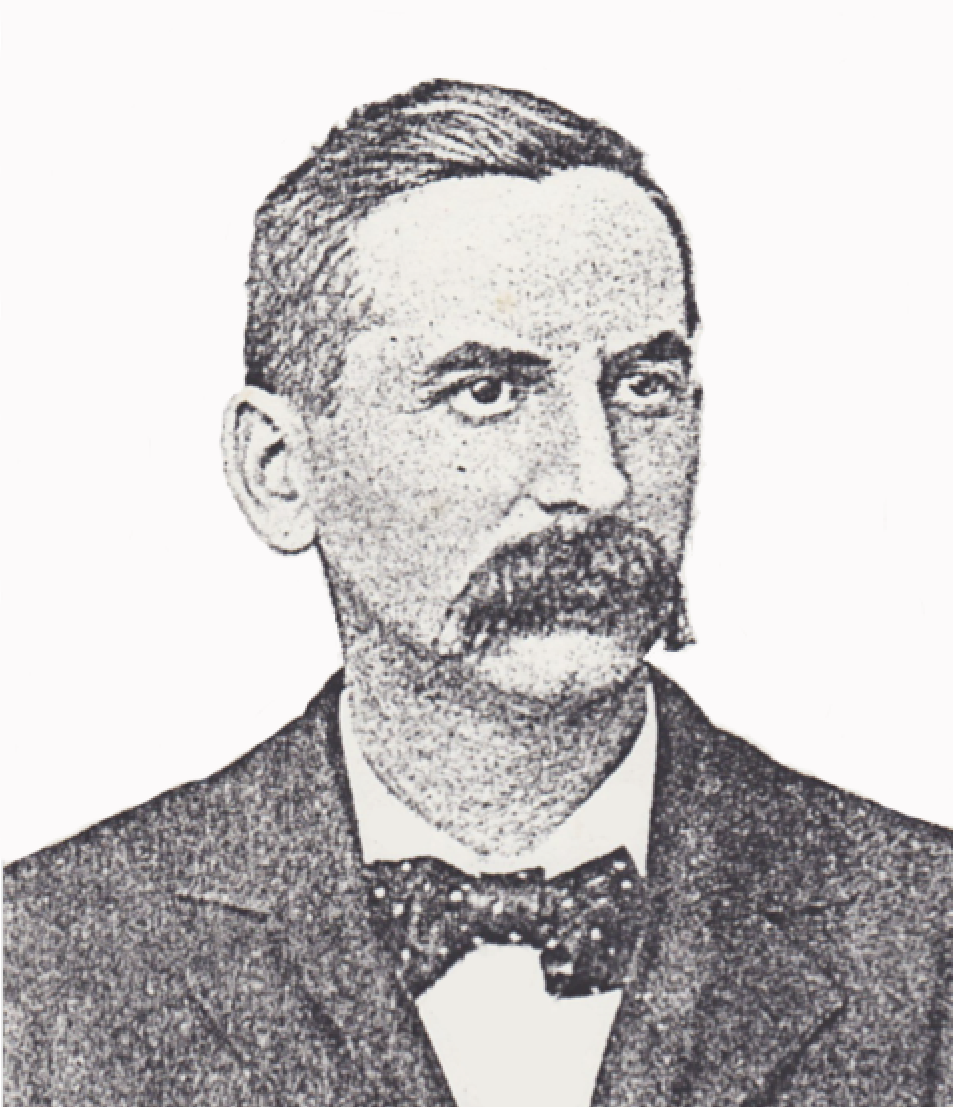
George W. Loomis, Jr.
Of Loomis & Marble, Carriage and Implement Dealers, Bowling Green, OH
Photo by Morrison
******************************************************************
Bowling Green, Tuesday, January 16, 1923 OBITUARY
GEO. W. LOOMIS DIED IN MICHICAN
Word was received here of the death of George W. Loomis aged 70 years, at his home in Perry, Michigan, Monday ate one p. m. Mr. Loomis was a former farmer of near Scotch Ridge and was in the hardware and implement business in this city for twenty years. He was very well known in all parts of Wood county. A complication of dis?? Which had been troubling him for the past several years, caused his death. However, he had only been bedfast since the Thursday prior to his passing. Funeral services were held from the late home at Perry this afternoon. The body will be brought to Bowling Green Wednesday sometime and taken to the home of C. A. Loomis, son of the deceased, who resides at 236 Maple Street. The remains will lie in state there until Thursday afternoon, when services will be held from the U. B. Church at one o’clock. Rev. Rush A. Powell will have charge. Interment will be in the Scotch Ridge cemetery.
George W. Loomis was born in Webster township on a farm near Scotch Ridge, February 18, 1852. He was the son of George and Rachael Loomis who were farming people. He was reared to manhood on the farm near Scotch Ridge and was united in marriage with Ellen Phillips, also a native of Webster township. Eight children were born to this union, six of whom are living. They are; Roy F., of Bowling Green, Mrs. George South, of Toledo; D. I., of Bowling Green; O. W., of Seattle, Washington; H. O., of Ionian, Michigan, and C. A., of Bowling Green.
In 1887 Mr. Loomis lost his wife by death. He remained a widower for several years and then remarried to Miss Valeria Phillips, of Webster township. Five children blessed the second union, one of whom preceded the parents. The four living are: Owen of Perry, Michigan; C. B. of Luckey; A. R., of Perry, Michigan, and Francis Margaret, at home.
Mr. Loomis came to this city from a farm near Scotch Ridge in 1890 and engaged in the hardware and farm implement business for twenty years. He then left this city and went to a farm near Perry, Michigan, where he has lived since. He was a member of the U. B. church while a resident of this city.
Mr. Loomis was one of the most affable men who ever conducted a store here. He preferred to listen rather than to talk, but he showed such interest in whatever was said that he always was an integral part of the conversation. He was a thoughtful man who revolved all suggestions over in his mind; and his disagreements with others never were characterized by heated pride or opinion or caustic utterances.
He was a very fine husband, father, and friend. In the days when he was a merchant here, his store was a gathering place for farmers from many miles around who discussed their problems there with each other or with him, certain of finding in him a sympathetic listener and a counselor whose advice it was worth while. “The friends he had and their adoption tried” he grappled to himself for life; and on his yearly visits here from Michigan it afforded him great pleasure always to meet again those he had known. Few men had a wider personal acquaintanceship in Wood county than he and all were his friends. To his employes he was like a father and there is none who worked for him but will say good things of him. His kindliness will be remembered long after his death and its influence upon those with whom he came in contact will permeate countless other people.
Besides the above mentioned ten children he leaves a wife and three brothers and three sisters to mourn his passing. The brothers and sisters are: E. L. Loomis of Miami, Florida; B. L. Loomis of Bowling Green, and d. H. Loomis of Scotch Ridge; Mrs. Frank Wight of Eagle Point, California; Mrs. Laura Pope of Mt. Pleasant, Mich., and Mrs. Charles Wight of Scotch Ridge.
MORE ON GEORGE W. LOOMIS Jr. (1852) and wives Ellen & VALERIA (1865)
IV. George W. Loomis, Jr. B: 18 Feb 1852 D 15 Jul 1923
+ Ellen Alvira Phillips B 18 Feb 1850 BP Scotch Ridge, OH D 15 Jul 1886 DP Webster Wood, OH mar 2 Jul 1871
++ Valeria L. Phillips B Jan 1865 BP Scotch Ridge, Wood OH D Oct 1924 DP Perry MI, mar 1886 after the death of Ellen.
Children of George Jr. And Ellen
V. Dennie A. Loomis D 1879
V. Roy Loomis B 1873 D 1953
V. Orpha M. Loomis B 1874 D 1968
V. Darley Irven Loomis B 1875 D 1961
V. Herman Loomis B 1880 D 1928
V. Orville Wayne Loomis B 1882 D 1972
V. Clyde Aden Loomis B 1884 D 1967
V. Baby (son) Loomis B 1886 D 10 Jul 1886
Children of George Jr. and Valeria
V. George Owen Loomis B 1887 D 1968 V. Pearl Loomis B 1890
V. Chauncy Burr Loomis B 1892 D 1943 V. Arnold Rae Loomis B 1897 D 1980 V. Ross E. Loomis B 1907 D 1922
V. Margaret F. Loomis B 1909
The ancestor of our Lyle Loomis is Darley Irven Loomis 1875. Darley was married to Edith E. McDowell and divorced after three years. They had one son, Dean Douglass 1898. Following the divorce of Edith, Darley married Ina Glenn Fuller some time after 1900, they had four children; George Aden 1907, Irvin Lyle 1911, Lois Jean and Gorden Willard.
Photo Mr. and Mrs. Darley Loomis
MORE ON Darley Loomis 1875
V. Darvin (Darley) Irven Loomis B: 6 Nov 1875 BP: Sugar Ridge D: 14 Mar 1861
+ Edith E. McDowell B 14 Sep 1878 BP Center Twp. D 25 Jan 1936 married 1897, divorced 1900 Children of Darvin and Edith
VI. Dean Douglas Loomis B 24 Mar 1898 D 1900 D 15 Sep 1900
++ Ina Glenn Fuller B: 29 May 1888 BP Troy Wood OH D 23 Mar 1962 DP Wood Co. OH mar 2 Jul 1871
Children of Darvin and Ina
VI. Vera Allene Loomis B 1 Jan 1906 D abt. Mar 1906
VI. George Aden Loomis B 19 Feb 1907 D 27 Jul 1987 DP Jerry City, OH
VI. son Loomis B 1908 D 1908
VI. Gordon Willard Loomis B 1 Sep 1909 D 10 Jan 1910
VI. Irven Lyle Loomis (Rev) B 10 May 1911 D: 2 Mar 2004
+ Marcella Lillian (Sally) Carter B: 24 Aug 1911 D: 25 Nov 2009
VI. Dale E. Loomis B abt 1913 D unknown
VI. Ella Mae “Alma” Loomis B 5 Mar 1916 D 9 Jul 1978 DP Fremont, OH
VI. Betty Marie Loomis B 30 Sep 1922 D unknown
VI. Lois Jean Loomis B 1 Aug 1924 D Apr 1925
Our Lyle Loomis (Irvin Lyle) married Sally (Marcella Lillian) Carter. Lyle and Sally were responsible for idea of donating the farm for public enjoyment and ultimately the Carter Farm to the Wood County Parks District.
Darley Loomis Obituary
The Republican Courier, Findlay, OH Mar 15, 1951
Darley Loomis Dies Tuesday,
Services Thursday For Wood Co. Man
BOWLING GREEN — Darley I. Loomis 84 of 513 S. College Drive, Bowling Green, died Tuesday morning at Wood County Hospital after a short illness.
Born Nov. 6, 1875 at Scotch Ridge, he was the son of George W. and Ellen (Phillips) Loomis. He married Glen Fuller on Feb. 11, 1905 at Scotch Ridge and she survives.
Mr. Loomis, who lived in Wood County most of his life, worked at the Bowling Green Post Office for seven years. Afterward he worked at various factories.
Also surviving are three sons, George, Jerry City. The Rev. Lyle Loomis, Battleground Ind., and Dale, Risingsun; three daughters, Mrs. Franklin (Ella Mae) Beaverson , Gibsonburg; Mrs. John (Mildred) Lindsay, Chambersburg, PA., and Mrs. Howard (Betty) Hillier, Bowling Green; three brothers, Clyde, Bowling Green, Owen and Arnold ,both of Perry, Mich, a sister Margaret Sanderson, Middleville, Mich., 16 grandchildren and 12 great-grandchildren. Burial Oak Grove Cemetery.
MORE ON D. LYLE LOOMIS (1911) AND MARCELLA CARTER (1911)
VI. Irvin Lyle Loomis (Rev) B: 10 May 1911 D: 2 Mar 2004 bur Oak Grove cem BG, OH
+ Marcella Lillian (Sally) Carter B: 24 Aug 1911 D: 25 Nov 2009 mar 24 Oct 1934
Children of Irvin and Marcella
VII. Joseph Leon Loomis B 1936 of State College, PA + Lucy F. Clemens
VII. Rose Marie Loomis B 1938 of LaGrange, IN
+ Kenneth E. Crague
VII. Jerry P. Loomis of Greentown, IN
+ Barbara J. Tredway
VII. John M. Loomis of Kutztown, PA
+ Jennifer M. Hanf
Lyle Loomis Obituary, 15 Mar 1951
Lyle Loomis was the son of Ina Glenn Fuller and Darley Loomis. He was preceded in death by nine brothers and sisters. On October 21, 1934 he married Marcella “Sally” Carter, who survives him. Their children are: Joseph Leon, Jerry Paul, John Michael, and Rose Marie. Rev. Loomis received his B.S. from Bowling Green State University in 1933; his B.A. in 1934; his Masters of Divinity from the Union Theological Seminary in Dayton, Ohio in 1936; his M.A. from BGSU in 1942. and EdD from Wayne State University in 1962. He ministered in the following churches: Oakwood United Brethren (1934-1937) McClure and Liberty Center United Brethren (1937-1941) Whitehouse Methodist (1941-1946) Trilby Methodist (1946-1950) Director of Christian Education Methodist Church, Detroit District (1950) Executive Secretary of Education and Camping Northwest Indiana Conference (1957) Associate Pastor of Grace United Methodist Church South Bend Indiana (1967) Scotch Ridge Presbyterian Church (1980-1993) and Otterbein-Portage Valley – Chaplain (1987-1998)
The Carter Branch of the family
The first ancestor of Sally Carter to live in the area was John Carter. John was born in Liberty Township, Knox County, OH in 1804. Information on John Carter can be found in the “Historical Record of Wood County” by Beers. John appears as a male inhabitant of Center Township, Wood County in 1839 when the total population of the township was only 97. [“Male inhabitants aged twenty-one years and over” includes John Carter. Beers pg. 250] In the record John Carter is not listed as holding political office but is listed as serving as a justice for a short period of time in 1840. “The Carter family” is listed as members of The United Brethren Church [pg. 253 Beers.] The US Fed. Census Mortality Schedules, 1850 -1885 states that John died of consumption in October of 1849. John married Charity Severe in 1822 in Knox Co., OH. John and Charity had seven children; Elizabeth, Richard, John, Marry, Harry, David and Jerry. John died at the early age of 45 leaving Charity with seven children to support on her own. However, Charity also died at a young age of about 50 leaving her children orphaned. The youngest Jerry was only six years old when she died.
I. John Carter B 1804 BP Liberty, Knox, OH D Oct 1849 of consumption [US Fed Census Mortality Schedules, 1850 – 1885]
+Charity Severe B 1801 Knox, OH D abt 1851 mar 25 Apr 1822 [daughter of James Severe born 1775 in Monogolia WV– Death in Liberty, Knox, OH 16 Jul 1849 and mother Mary (Polly) Harris born 1779 in Preston, WV – death 15 Dec 1852 in Mount Liberty, Knox, OH, couple moved to OH prior to 1800 when their third child, Rebecca, was born]
Children of John and Charity
Elizabeth, Richard, John 1839 – 1910, Mary, Harry, David and Jermiah (Jerry) 1845 – 1825
Information of Jeremiah or Jerry, the youngest son of John and Charity is also included in the Beers history.
Jeremiah Carter Biographical Record of Wood County, Beers, 1897, P 1092-3
“The eighty acres of land owned by our subject have been transformed into one of the most comfortable homesteads of Center Township, the land of which has been brought to a fine state of cultivation and is embellished by a handsome and substantial set of farming buildings, including a fine residence. A flourishing orchard, and a choice assortment of the smaller fruit trees, serve to add to the comfortable appearance of the premises and supply the household with the luxuries of the seasons.
Mr. Carter is a man of good education, well informed and intelligent, and belongs to one of the pioneer families of Center Township, where he first opened his eyes to the light of day, on October 26, 1845. He is a son of John and Charity (Severe) Carter with siblings: Elizabeth, Richard, John, Mary, Harry and David. His father died when he was about four years old, and his mother departed this life two years later. He then went to live with his eldest sister, where he remained until he reached the age of 11, during which time he received his elementary education in the district schools, and for the following six years worked as a farm hand for his board and clothes. On the expiration of that time he started out to work for himself, being employed by the day, week, or month, but receiving very meager wages.
GAR 86th OVI COMPANY D ENLISTED 30 JUNE 1863 DISCHARGED 18 FEBRUARY 1864
[30 Jun 1863 Civil War – co. D, 86th OVI under Colonel Lemert and Captain J. H. Reid of BG.] On the inauguration of the Civil War, Mr. Carter resolved to strike a blow in defense of the union, and when yet not 18 years of age enlisted on June 30, 1863, in Company D. 86th OVI under Colonel Lemert and Captain J. H. Reid of Bowling Green. With his company he marched to Cleveland, OH, thence to Camp Chase, and from that place went South, where he was mostly engaged in guard duty. He was with his company at the capture of John Morgan, and remained with that command until his discharge Feb 18, 1864.
Mr. Carter then returned to Wood County, and for one year attended the district schools, at the end of which time he entered Baldwin University, there continuing his studies for two years. For the same length of time he was then engaged in teaching school, and later became part owner in a lumber mill, the firm being Wright & Carter. He continued the manufacture of lumber for 10 years, when he disposed of that business and purchased the 80 acre farm on which he now resides. It was all wild land, heavily timbered, but through his earnest, untiring labors, has transformed the place until it is now one of the best farms in the section and among the many improvements there seen, is his pleasant and comfortable home, which was erected at a cost of $1800.
On Oct. 25, 1877, Mr. Carter was united in marriage with Lillie Young of Weston Township, by whom he has three children – Everett, born Nov. 9, 1878; Irving born Dec. 31, 1880 and Goldie May born Sep 28, 1884. In political faith Mr. Carter is an upcompromising Republican and has served his fellow townsmen as school director for eight years, having always taken a deep interest in the promotion of education. In disposition he is a social and genial and his honest, industrious and upright life have gained him the respect and confidence of all with whom he has come in contact. ]
MORE ON JERRY:
II. Jeremiah (Jerry) Carter, Pvt. B 26 Oct 1845 BP Wood Co., OH D 18 Jan 1925 DP B.G. Wood Co., OH bur Oak Grove Cem.
+ Lilly Young B 13 Apr 1858 D 5 Feb 1932 DP Bowling Green, OH mar 25 Oct 1877 bur Oak Grove Cem. B.G. OH
Children of Jerry and Lilly
III. Everett E. Carter B 9 Dec 1878 D 9 Apr 1959 bur Oak Grove cem B.G. OH
III. Irvin Young Carter B 1880 D 1950
III. Goldie M. Carter B 1884 D 1958
+ unknown Ketzenbarger
Everett Carter, son of Jerry and Lilly was born in 1881. He married Eliza Edith May Lyon on the 12th of January 1909. Everett purchased 80 acres of farmland in 1901, land not far from his father’s homestead. It is Everett’s property that is now the Carter Farm Park belonging to the Wood County Park System.
MORE ON EVERETT;
III. Everett E. Carter B 9 Dec 1878 BP Bowling Green, Wood Co., OH D 1959
+ Eliza Edith May Lyon B 18 Aug 1884 BP Essex, Clinton, MI D 16 Oct 1974 DP Bowling Green, Wood Co., OH mar 12 Jan 1909 [father Theodore Lyon, mother Carolin Conklin]
Children of Everett and Eliza
IV. Marcella Lillian Carter B 24 Aug 1911 D 25 Nov 2009 DP PA
IV. Marjorie B. Carter B 4 Jan 1915 D 9 Feb 1915
IV. Gertrude Elizabeth Carter B 1916 D 17 Feb 2011
+ Phillip C. Sutter B 1910 D 1988
Everett’s oldest daughter, Sally married Lyle Loomis, an ordained minister. The ministry took Sally and Lyle to many cities. In 1977 Sally and Lyle moved back to the area. They had four children; Joseph L., Rose Marie, Jerry P. and John M.
Marcella Lillian “Sally” Carter Loomis Obituary, 2009
Marcella Lillian “Sally” Carter Loomis was born to Everett Edward Carter and Edith May (Lyon) Carter on Aug. 24, 1911, at the Carter Road family farm in Bowling Green, Ohio. She graduated from Bowling Green State College in 1933 with a BS degree in Education, planning to be a home economics teacher.
Sally married her childhood sweetheart, I. Lyle Loomis on Oct. 24, 1934, at the Trinity Evangelical United Brethren Church parsonage in Bowling Green, Ohio. Rev. Lyle Loomis had been granted his preaching license and was continuing his studies at Dayton Theological Seminary. The couple began their married life at Oakwood, Ohio, serving the EUB church.
Sally and Lyle raised four children: Joseph L. Loomis (Lucy F. Clemens) of State College, Pa., Rose Marie (Loomis) (Kenneth E. Crague) of LaGrange, Ind., Jerry P. Loomis (Barbara J. Tredway) of Greentown, Ind., and John M. Loomis (Jennifer M. Hanf) of Kutztown, Pa. These four children gave Sally and Lyle 12 grandchildren, 22 great-grand children, and one greatgreat-grand child.
For many years Sally enjoyed being a historical interpreter for Zimmerman one-room school, telling local children about her life in the early 1900’s. Many local elementary students started their living- history experience listening to Sally sitting in the barn of her childhood or, during colder weather, listening in front of the family room fireplace. Then the children walked down Carter Road to the Zimmerman School to live as pioneer school children for a day. Sally’s dedication and enjoyment of the children led to Bowling Green School District’s award of Educator of the year.
Sally has been a member of Sugar Ridge Community Church since birth and returned to active membership when the couple came back to the area in 1977. Sally had a generous and giving spirit. One of her and Lyle’s tangible gifts was the donation of her childhood home place, the 80-acre Carter Loomis farm, to the Wood County Park District. This event took place on Nov. 18, 2001, exactly 100 years after the Carter family originally purchased the farm. Sally and Lyle were honored with the Spirit of Wood County Award for their outstanding public service in 2003.
Lyle died March 4, 2004, and Sally has lived the past five years at Bowling Green Manor where she died Nov. 25, 2009. Sally will be greatly missed by all who knew her. There are many local individuals who were recipients of her kind and generous deeds. The Memorial Service was held at Sugar Ridge Community Church on November 29. Burial was in Oak Grove Cemetery, Bowling Green, Ohio. [Bio provided by Matthew W. Hungling, Access Services Jerome Library – BGSU]
MORE ON MARCELLA (SALLY) :
Children of Marcella and Lyle Loomis
Joseph Leon Loomis B 1936 of State College, PA
+ Lucy F. Clemens
Rose Marie Loomis B 1938 of LaGrange, IN
+ Kenneth E. Crague Jerry P. Loomis of Greentown, IN
Jerry P. Loomis of Greentown, IN
+ Barbara J. Tredway John M. Loomis of Kutztown, PA
John M. Loomis of Kutztown, PA
+ Jennifer M. Hanf
Bibliography
VIDEOS
“Discovering the Earth – the Making of Ohio” [borrowed from Lucas Co. Public Library #24759989] “Discovering the Earth – What the Glaciers Did to Ohio” [borrowed from Lucas Co. Public Library #24315557]
“The Story of the Great Black Swamp”, 1982 [available through WGTE and WBGU]
LITERATURE
“Ashpit Soap,” compiled by F.J. McGinnis, The Good Old Days An Invitation to Memory , F. & W. Publishing Co., 1960, pgs 134 – 135.
“Black Swamp Once Ruled by Land and People,” by Ken Kinney, Bowling Green Sentinel – Tribune “Geofacts : Bedrock Topography of Ohio”, Geofacts No. 1 ODNR, Division of Geological Survey, pgs. 1-4. http//www.ohiodnr.com/geosurvey/geo_fact/geo.f01.htmwas
“Geofacts : The Teays River”, Geofacts No. 10 ODNR, Division of Geological Survey, pgs. 1-4. http//www.ohiodnr.com/geosurvey/geo_fact/geo.f10.htm
“Glacier Left the Black Swamp,” Bowling Green Sentinel – Tribune , Sept. 8, 1977.
“Ice Age in Ohio,” Educational leaflet (EL) #7, by Michael Hansen, 1997. http://www.ohiodne.com/geosurvey/
“Johny Appleseed,” compiled by F.J. McGinnis, The Good Old Days An Invitation to Memory , F. & W. Publishing Co., 1960, pgs 165 – 170.
“Majestic Trees of America,” http://www.arborday.org/trees/majTreesTimeline.html
“The Story of Ohio’s Rocks,” Aurele La Rocque and Mildred Fisher Marple, Ohio Fossils , Columbus, 1970, pgs. 8 – 28.
“The Heart of Flatness,” by John Fleischman, Ohio Magazine , pgs. 31-46, October ’94.
WEBSITES
“Historical Background – Ottawa National Wildlife Refuge,”
http://midwest.fws.gov/ottawa/history.html
“The Great Black Swamp History of Perrysburg,” http//www.historicperrysburg.org/history/swamp.htm
“Prayers Against Cholera,” By R.L. Heminger, The Courier (Findlay,OH),
http://www.thecourier.com/opinion/Historic/R062697.htm
“Black Swamp Heritage Articles,”
http://www.usgennet.org/usa/ne/state/BillsArticles/BlackSwamp/intro.htm
BOOKS
A Black Swamp Family, Dorthy R. Disher, Editor, Vintage Press, NY, NY, 1982. ISBN 533 0521-9 Lib. Of Congress No. 81-90497
Black Swamp Farm , Howard Good, Ohio University Press, 1967.
Everyday Life in Early America, David Freeman Hawke, Harper & Row Publishers, 1988. ISBN 0-06-015856-5
Elmore’s 100 Years 1851 1951 , Newell P. Witte, Genoa Printing Co. Maumee River 1835 with the William C. Holgate Journal – May 16 – June 24, 1835 , by Louis A. Simonis, The Defiance County Historical Society, Defiance, OH, 1979.
Pioneer Scrap – Book of Wood County, Ohio, Chas. W. Evers, Heritage Books, Inc., 2002. ISBN 0-7884-2151-4
The Great Black Swamp: historical tales of the 19th – century northwest ohio , Jim Mollenkopf, Cat Publishing, Toledo, OH, 1999. ISBN 0-9665910-1-1 Lib. of Congress No. 99-073706
The Great Black Swamp II: MORE historical tales of northwestern ohio, Jim Mollenkopf, Cat Publishing, Toledo, OH, 2000. ISBN 0-9665910-2-X Lib. Of Congress No. 00-090673
The Great Black Swamp III: Further Historical Tales of Northwest Ohio , by Jim Mollenkopf, Lake of the Cat Pub, 2008 Lib Of Congress No. 20088903857
The Ohio Frontier Crucible of the Old Northwest, 1720 – 1830 , R.Douglas Hurt, Indiana University Press, 1998.ISBN 0-253-33210-9
The Scotch of Scotch Ridge, Charlotte Dunipace Shaw, Closson Press, Apollo, PA, May 1999
The Trail that Leads Back, Frank Conrad Hasel, Gray Printing Co., 1985

